How to Advertise on Pinterest: 2025 Guide
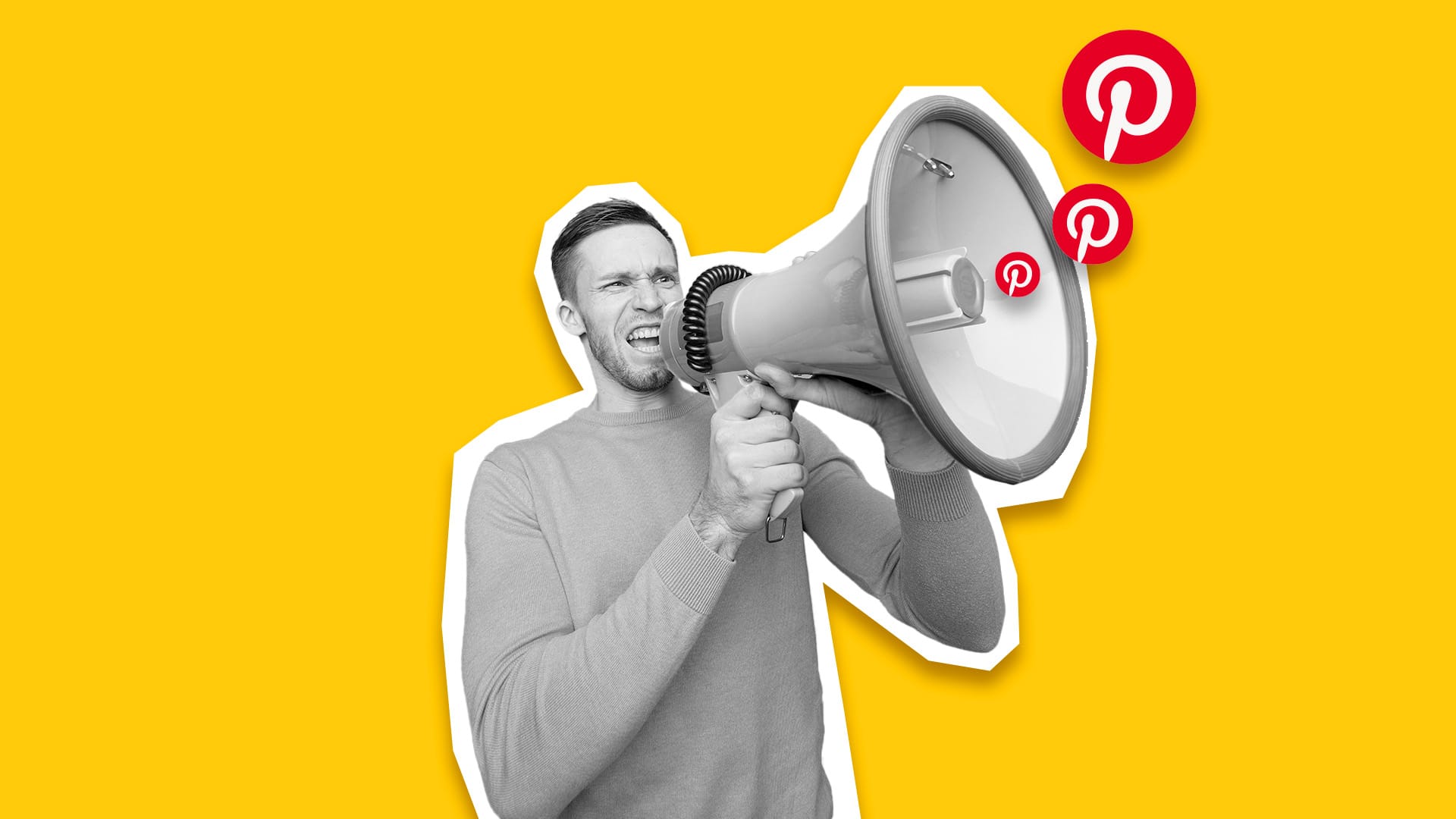
With over 498 million monthly active users, Pinterest’s presence stretches beyond visually appealing and aesthetic content. Users come to this platform searching for inspiration, allowing brands and content creators to reach their target audience uniquely. While organic strategies help increase brand awareness, advertising on Pinterest can expand reach and conversions.
Pinterest’s advertising platforms offer numerous format options based on your brand’s campaign objectives. This allows brands to select how they want to tell their campaign story and target their ideal audience. This article will explore advertising on Pinterest to showcase your brand benefits creatively.
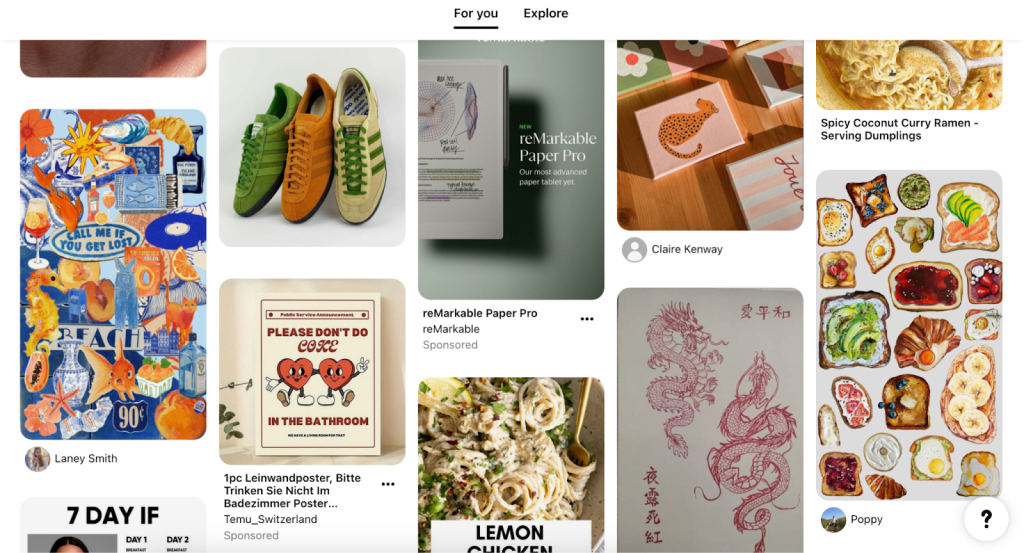
A Pinterest Business account unlocks the network Business Hub, a comprehensive marketing and advertising tool. Business accounts can also connect to third-party tools, such as Metricool, for scheduling and auto-publishing content, accessing content metrics, and utilizing SmartLinks, a link-in-bio tool.
Pinterest Business Hub
To advertise on Pinterest, your brand must have a Pinterest Business account. This unlocks the Pinterest Business Hub, including advanced insights, audience demographics and interests, trends, and advertising tools.

This information is extremely useful as a brand to optimize your content and advertising campaigns.
Pinterest Advertising Formats, Objectives, and Bidding
Let’s understand what formats and objectives Pinterest advertising offers, to know which campaigns align with your brand goals. Pinterest also suggests specific bidding strategies per campaign, helping brands maximize their advertisements.
Pinterest outlines these objectives and format options as such:
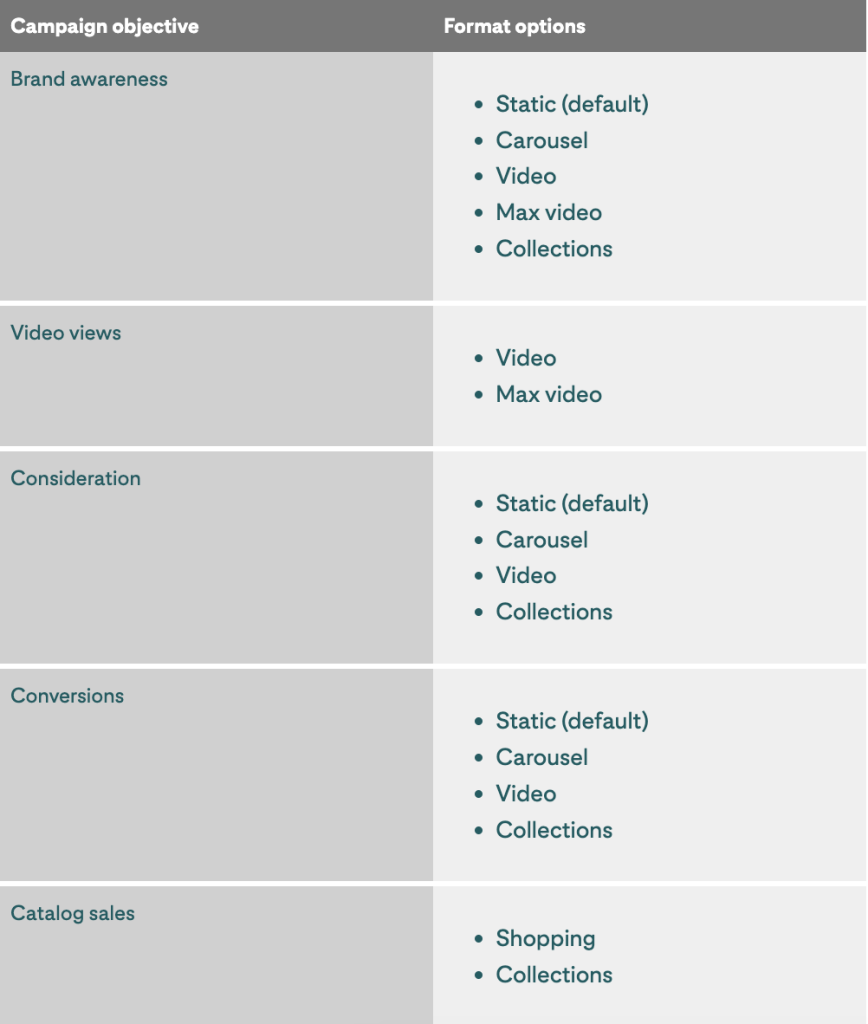
Campaign objectives and bidding explained
Each objective has compatible format options that Pinterest suggests, based on your brand offerings. These also determine your bidding strategy, which we will explain per objectives,
With these objectives listed above, let’s break down what these mean and the suggested bidding strategies to use for each.
- Brand awareness: Aligned to help people discover your brand, products, or services.
- Suggested bidding: Pinterest suggests Automatic bidding or Custom bidding by setting a maximum cost per one thousand impressions (CPM). This is the amount you’re willing to pay when visitors click through your ad to land on your website.
- Video views: Increase the amount of quality views, average play time, and completion rates of your videos.
- Suggested bidding: Set a maximum CPV bid, the amount you’re willing to pay per view when users watch your video for more than 2 seconds.
- Consideration: Increase the number of Pin clicks or outbound clicks on your ad.
- Suggested bidding: Set Automatic bidding (when optimizing for outbound clicks) to have Pinterest manage your bids or select Custom and set a maximum cost per click (CPC) that you’re willing to pay when people click on your ad in-grid.
- Conversions: Drive people to take a specific action, such as event sign-ups, product checkouts, or add to cart on your website.
- Suggested bidding: Select Automatic or Custom to set your budget and the target average cost per action (CPA) you’re willing to pay when users click through your ad to visit your website or complete an outbound click.
- Catalog sales: Help people discover your products or services while searching Pinterest for inspiration.
- Suggested bidding: Select Automatic (when optimizing for outbound clicks) or Custom to set your budget and the target average cost per action (CPA) that you’re willing to pay when people click through your ad to visit your website.
Format options explained
Now that we’ve covered the ad objectives and bidding strategies, let’s move to format options including specs, character count, and best practices.
- Standard image ads
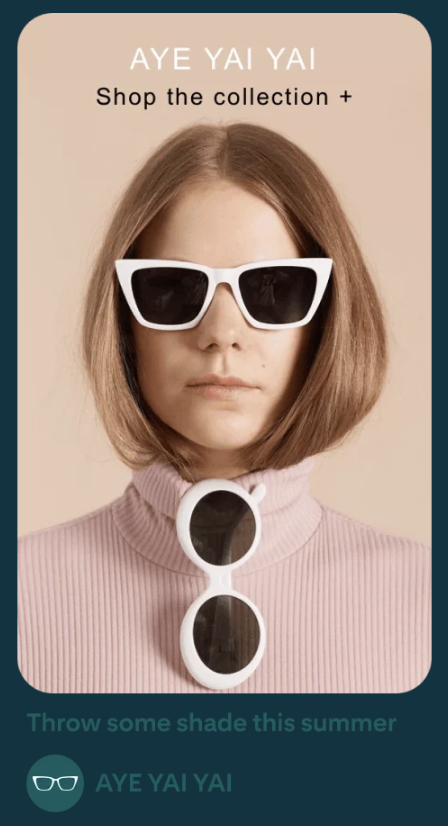
Source: Pinterest
Standard image ads include only one image, with a recommended 2:3 aspect ratio (1000 x 1500 pixels) and file types .PNG or .JPEG. Titles can have up to 100 characters and descriptions up to 500.
The description will not appear in the home or search feeds but is visible when clicking on the ad. The algorithm considers descriptions for relevancy and organization, so it’s recommended to optimize your description.
- Standard video ads:
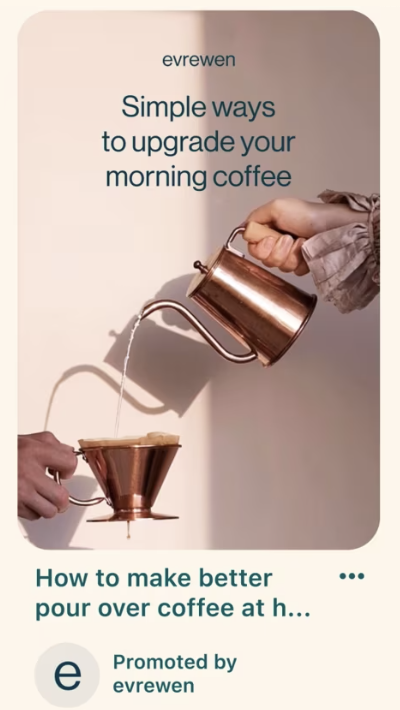
Source: Pinterest
Standard video ads are the same size as a regular Pin, and are compatible with file types MP4, MOV, or M4V with up to 2GB file size. Video lengths can range from 4 seconds to 15 minutes, however, it’s recommended videos are between 6 to 15 seconds to capture audiences and increase the likelihood of video completion.
Video aspect ratios can be square (1:1) or vertical (2:3, 4:5, or 9:16). The title and description lengths are the same ad image ads, 100 and 500 characters respectively.
- Max video ads:
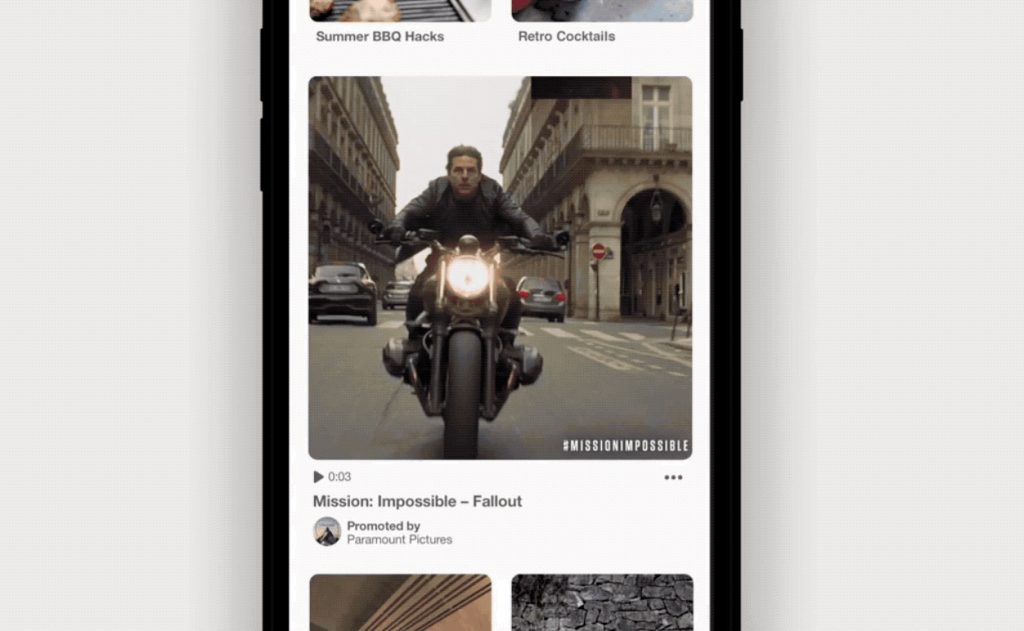
Source: Social Media Today
Max video ads expand across the user’s entire feed on mobile and are only available in a paid format. The file type and size are the same as regular video ads (MP4, MOV, or M4V and up to 2GB), while the aspect ratio cannot exceed 1:1. The title and description remain the same, 100 characters and 500 respectively.
- Carousel ads:
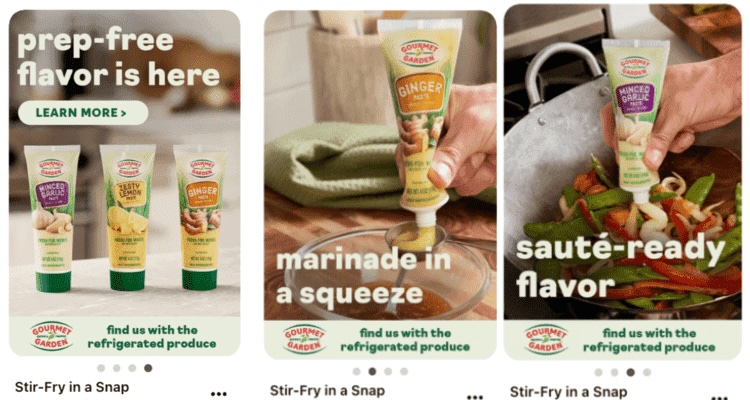
Source: WP Tasty
Carousel ads feature multiple images for viewers to swipe through. These can include 2 to 5 images, compatible with .PNG or .JPEG formats. The max file size per image is 20MB, with recommended aspect ratios of 1:1 or 2:3.
- Collections ads:
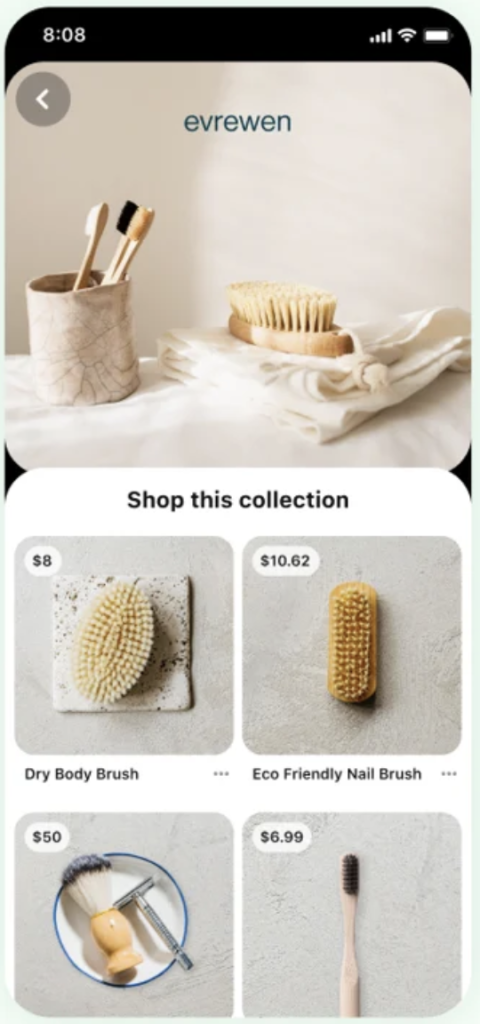
Source: Seer Interactive
Collection ads appear as one main image above three smaller images, in mobile device feeds. These must include 1 “hero creative” which will stand out amongst the other images. There needs to be a minimum of 3 secondary creatives, with a maximum of 24.
The hero creative can have an aspect ratio of 1:1 or 2:3, while secondary creatives must have a coordinating ratio. Pinterest recommends making secondary creatives with a 1:1 ratio to optimize the viewing experience.
- Idea ads:
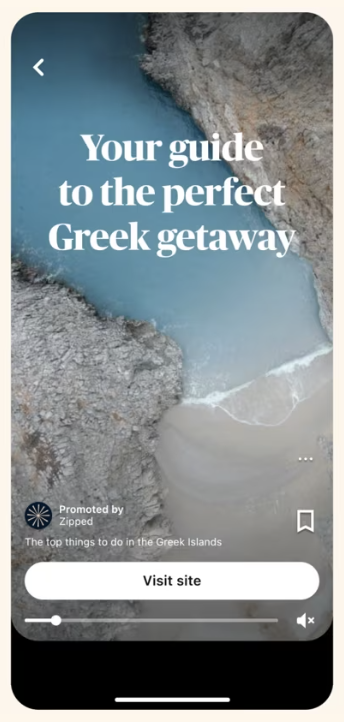
Source: Pinterest
Idea ads appear as a set of multiple creatives, such as videos, images, lists, and custom text in a single Pin. For images, Idea pins are compatible with BMP, .JPEG, .PNG, .TIFF, and .WEBP formats. Video formats can be MP4, M4V, and MOV. 1GB file size is recommended, however, on iOS and Android 2GB is the maximum, and on the web, 100MB is the max format.
The maximum length for videos is 5 minutes, with a recommended resolution of 1080 x 1920 pixels (9:16 ratio). The title character length is 100 characters max and the on-page text can be up to 250 characters.
- Shopping ads:
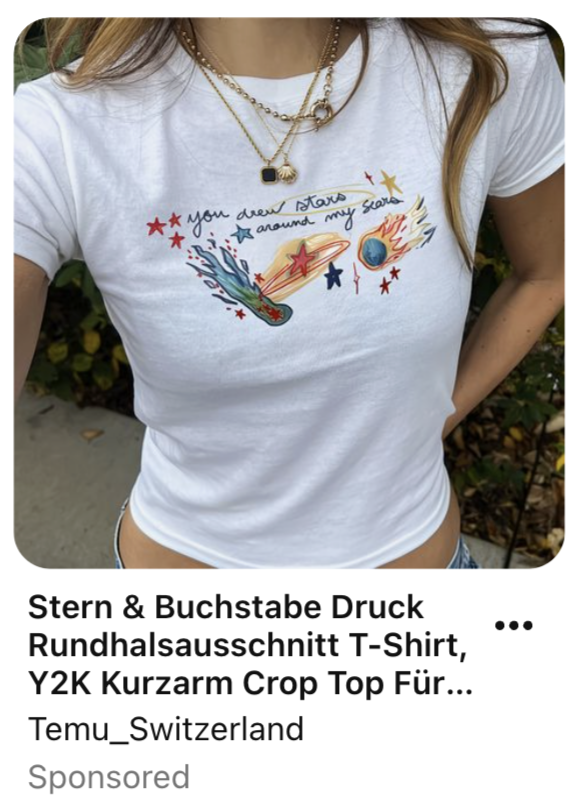
Source: Pinterest
Shopping ads feature one image at a time and allow viewers to purchase products they find on Pinterest. Shopping ads have the same specs and best practices as standard image ads.
- Showcase ads:
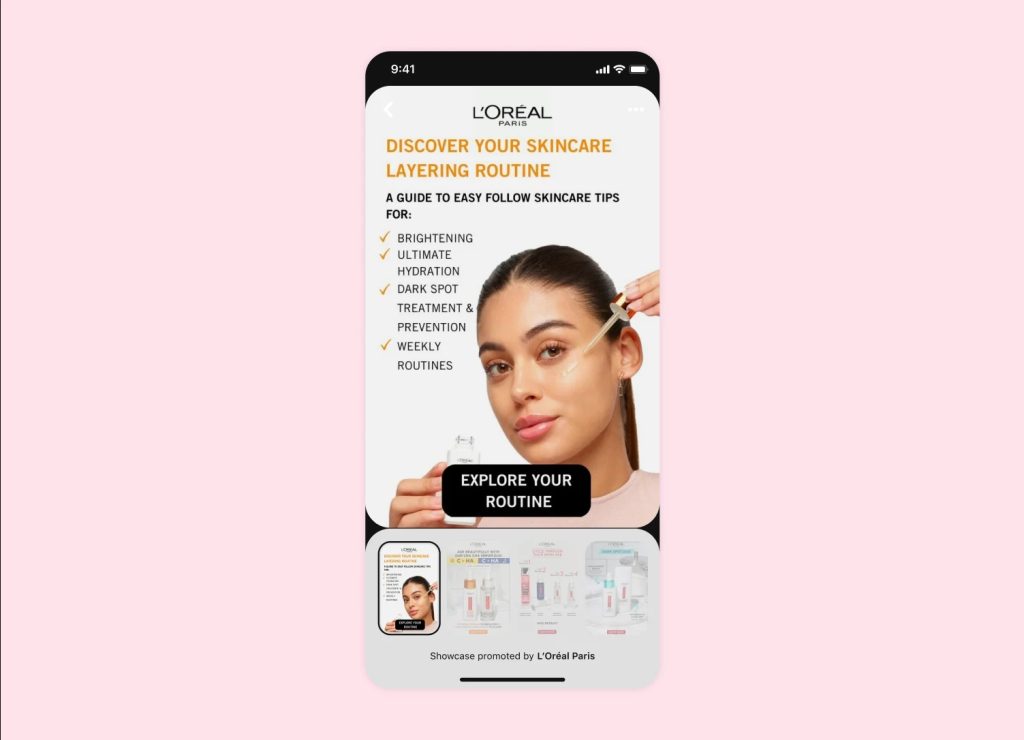
Source: Pinterest
Showcase ads are multi-layered ad formats that feature multiple “cards”. This is swipeable content that advertisers can add up to three features with outbound clicks and product links.
- Quiz ads:
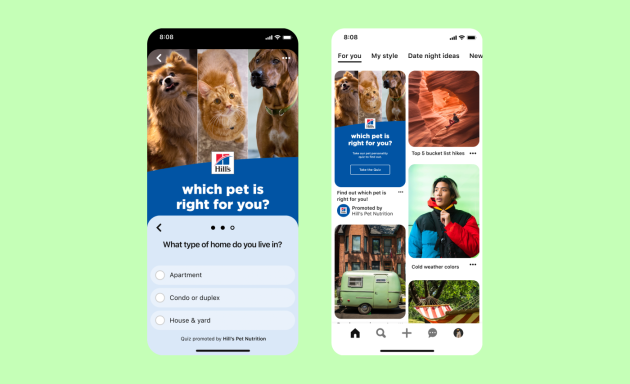
Source: ecom p.blog
A quiz ad features multiple-choice questions and answers. Advertisers can add outbound links to more content within each quiz result. These types of ads are compatible with image files .BMP, .JPEG, .PNG, .TIFF, .WEBP and video files MP4, MOV, or M4V. The maximum file size is 32MB, and videos can be between 3 to 60 seconds.
The recommended resolution size is 1000×1500 pixels, and the aspect ratios for the title and result pins should be 2:3. The title character length max is 100 characters, the description up to 500, and text overlays can include up to 10 words. Questions can have up to 96 characters, including spaces, and answers up to 48 characters, including spacing.
How to Create an Ad Campaign on Pinterest
Now that you’re familiar with Pinterest ad options, specs, and recommendations, let’s run through building a Pinterest campaign. You can do this through the Pinterest Business Hub, under the Manage campaigns section.
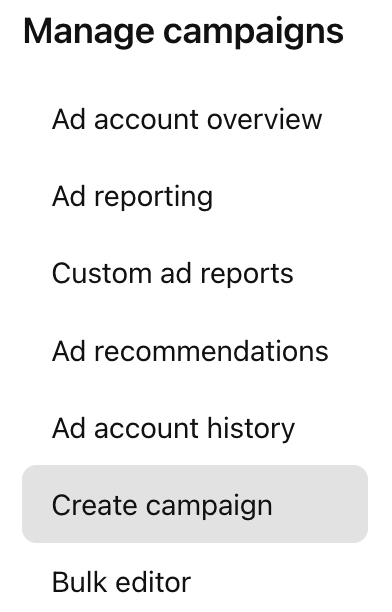
Click Create campaign, and you will be taken to Pinterest Ads Manager. First, select the currency you will be billed. Then, accept the advertising agreement.
From here, you will see an account overview of previous campaigns, including the money spent, impressions, paid pin clicks, CPM, and CPC. To create a new campaign you have two options, creating a campaign from scratch or promoting a pin. Promoting a pin is similar to Instagram’s Boost Post feature, turning an organic Pin into a paid ad.
Promote a Pin
This option turns one of your pins into a paid ad. To do this, click Promote pin on the account overview page of the Business Hub. A new page will appear, prompting you to select a pin, add a destination URL, select a budget and duration, and choose your targeting option.
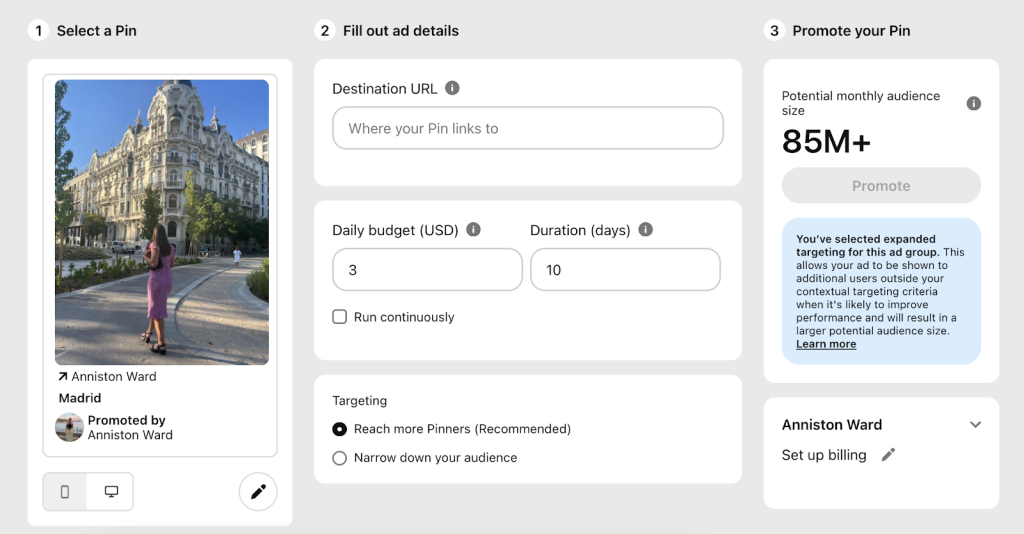
When choosing your budget, add the maximum amount you want to spend daily and the duration of the campaign. You can also select to run this ad continuously.
For the targeting section, you can either select Reach more Pinners, where Pinterest will automatically target users most likely to be interested in your content. Alternatively, you can narrow down your audience by age, gender, and interests.
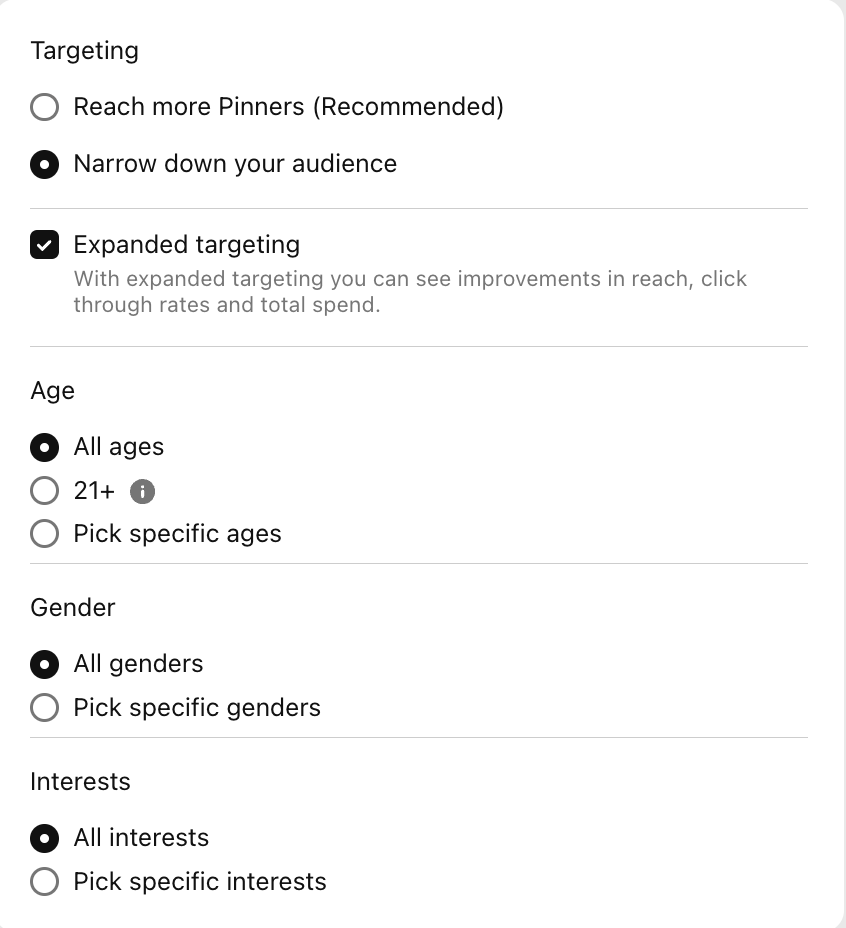
Lastly, view the potential monthly audience size that your ad can reach. This estimates the number of accounts you may be able to reach monthly. Then, set up your billing information to promote the pin.
Create a new Pinterest campaign
When starting a campaign from scratch, you have two options: An automated or a Manual campaign.
As you can see, automated campaigns speed up the process where Pinterest selects the targeting and bidding strategies. For the sake of this article, let’s run through both options to see which is best for your brand.
Automated campaigns
The first option when building an automated Pinterest campaign is selecting your objective. Select between Conversions and Consideration. Then, select the pins you want to add or create new pins. If you create a new pin, this will take you to the Pin builder.
When selecting pins, you can filter between the format and your boards. You must title each of these pins for the campaign. The last step is to review the following aspects of your campaign:
- Campaign name
- Campaign goal
- Age restrictions
- Location targeting
- Campaign budget and duration
- Campaign status
Once you confirm your billing, you can publish your campaign.
Manual campaigns
If you want to narrow your campaign details, manual campaigns allow for advanced creation tools. First, select a campaign goal from awareness, consideration, or conversions. Then, name your campaign and choose the status.
Note that conversion campaigns must have conversion data from the Pinterest Tag or Conversions API.
Select if your campaign budget will be daily or lifetime, and the length of the campaign. Click Continue to move to the targeting strategy. In this step, you can create multiple ad groups if you want to segment your campaign by audience.
The targeting strategies include reconnecting with users, finding new customers, or choosing your own audience.
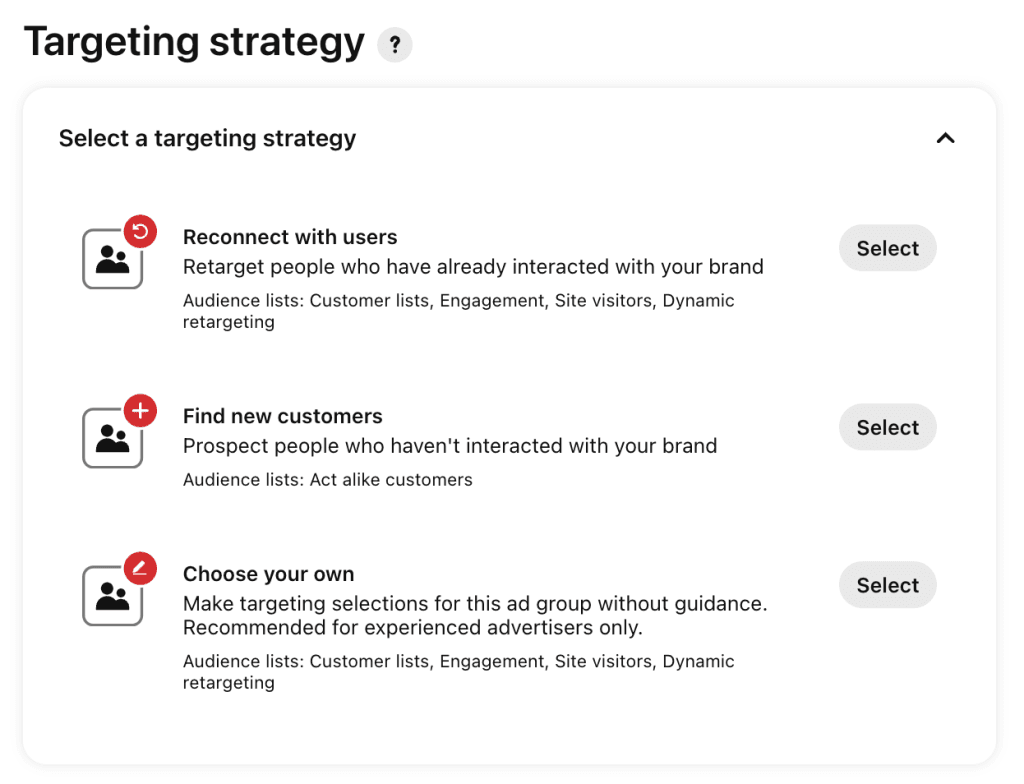
You can add further target details such as audience lists, interests and keywords, demographics, and placement and tracking. Pinterst allows you to save targeting details as a reusable template.
Next, choose the optimization and delivery. You can optimize pin clicks or outbound clicks. However, changing the optimization strategy will change it for every ad group in the campaign. Then, choose your bidding strategy, between automatic and custom. Custom bidding allows you to select your maximum CPC, CPV, or CPM.
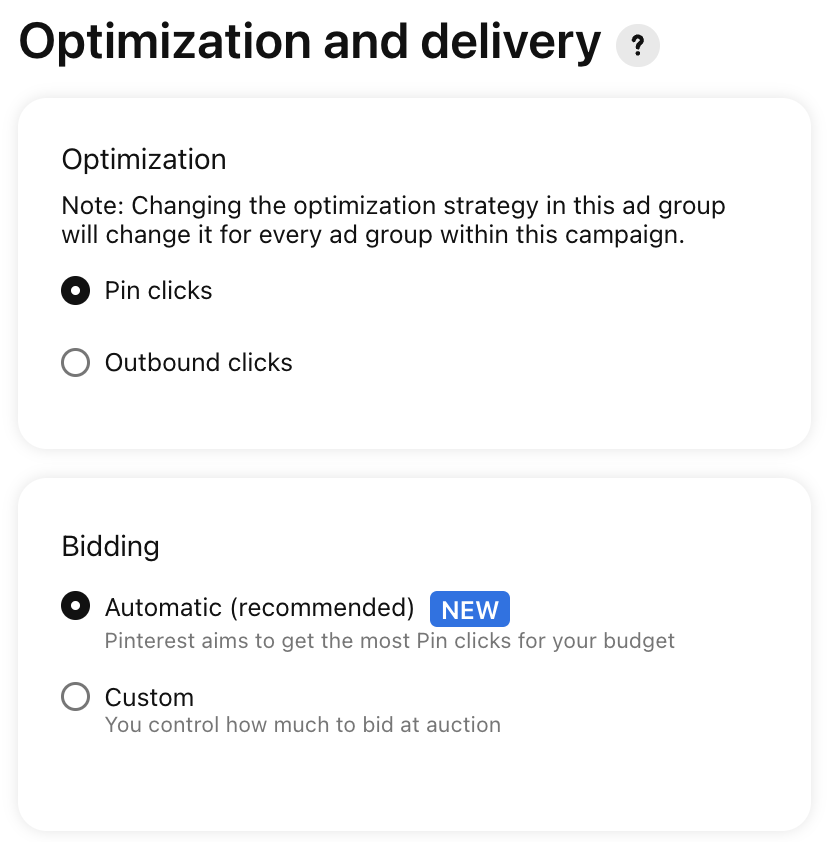
Lastly, add the pins you want to promote in which you can select pins, create an ad, or create an Idea ad. On the right side of the campaign builder, view your estimated monthly audience size. Once you have reviewed your ad, click Publish.
Pinterest Marketing Strategy
If your brand decides to advertise on Pinterest, make sure to consider this for your Pinterest marketing strategy. This should include brainstorming with your team the audience you want to target, content you want to promote, links you want to drive traffic to, and overall goals.
Creating a strategy should involve audience and keyword research to ensure the content you’re sharing matches with what users are searching for. To build your Pinterest marketing strategy from scratch, make sure to read this article:
